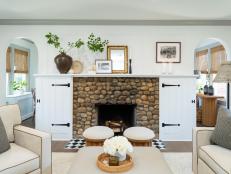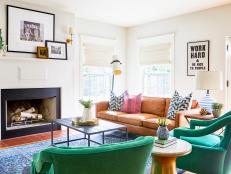1 / 20
Photo: Gilles Mingasson/Getty Images.
From:
Christina On The Coast.
Go Bold With Textures
When working with a palette devoid of color, texture is key to creating interest. Here, Christina Anstead fills her oversized sectional with a mix of pillows in knit, shaggy and linen textiles. Woven baskets and trays, as well as the layered area rugs, add tactile appeal.








